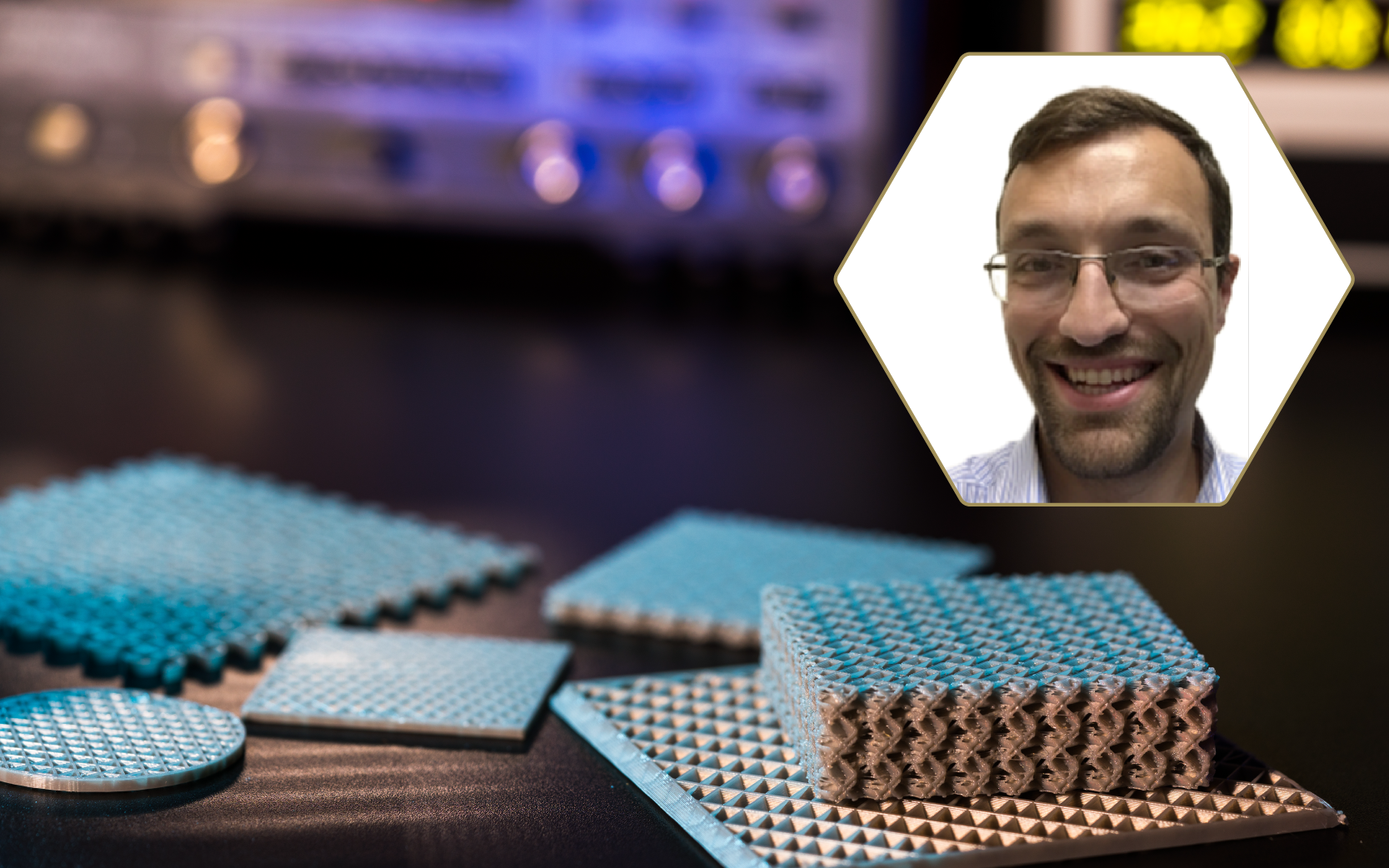IMat Initiative Lead Q&A: Zeb Rocklin
Sep 22, 2023 —

Zeb Rocklin leads the mechanical metamaterials research initiative for the Institute for Materials at Georgia Tech. In this role, he aims to bring faculty together within the Colleges of Sciences, Engineering, and Design to develop, characterize, and apply novel metamaterials — those with programmed structures above the atomic scale, blurring the line between material and machine.
In this brief Q&A, Rocklin discusses his research focus, how it relates to materials research, and the impact of this initiative.
What is your field of expertise and at what point in your life did you first become interested in this area?
I'm a soft matter physicist who studies flexible structures and metamaterials. Flexible structures can support mechanical loads while undergoing complex deformations. Metamaterials are structures engineered with repeating patterns such as holes or creases that imbue them with fundamentally new properties. I have been interested in using math and logic to solve puzzles and figure things out from a very young age. This has grown over the last several years into designing structures with new geometries to convey force in new and useful ways.
What questions or challenges sparked your current materials research?
Flexible structures lend themselves to complex behavior and fascinating puzzles. Why do origami sheets seem to bend in exactly the opposite direction as conventional thin plates? How can you design a structure that can robustly toggle between flexible and stiff? How many different stable shapes can be programmed into a single mechanical metamaterial?
Why is your initiative important to the development of Georgia Tech’s materials research strategy?
This research offers a new way of conceptualizing materials research, connecting with a vibrant and growing international materials community. Materials research often involves manipulating the smallest (atomic) scale, whereas metamaterials aim to take advantage of structure at all scales, up to the human scale of the overall system. This complements existing materials research while connecting it with other disciplines such as robotics and mechanical engineering.
What are the broader global and social benefits of the research you and your team conduct?
As a scientist, I have faith that deeper knowledge leads to broad social benefits. In the case of metamaterials, this benefit is already being realized. Soft robots, sheets of paper, textiles, plants, and the human body itself are all flexible structures. Metamaterial principles are being used widely, from space missions to surgical stents, to create stronger, tougher, cheaper, softer, and lighter-weight structures.
What are your plans for engaging a wider Georgia Tech faculty pool with IMat research?
Georgia Tech has a remarkable set of researchers who work on metamaterials, as well as many others who work in adjacent and complementary areas. Our immediate goal is to strengthen communication and build a sense of community to share ideas and craft teams of collaborators capable of developing new research programs.
Laurie Haigh
Research Communications




